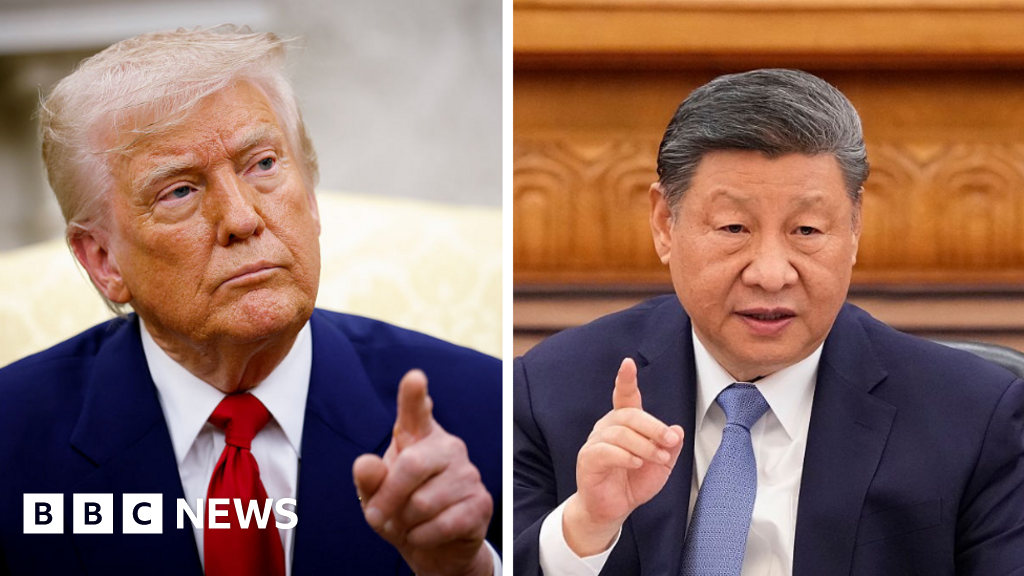As beleaguered efforts to negotiate a ceasefire in Ukraine drag on, Russia has been quietly rearming along what is now its longest line of direct contact with NATO – the 1,340-kilometre (830-mile) border it shares with new alliance member Finland.
Recent satellite images show that Russia has reinforced its military presence over the past few months along the border with Finland, which broke with its decades-long policy of neutrality by joining the NATO military alliance in 2023 in the wake of Russia’s full-scale invasion of Ukraine.
The images, reported by the Wall Street Journal and New York Times and confirmed by NATO officials, show rows of new tents, new warehouses that could be used to store military vehicles and newly renovated combat aircraft shelters.
To display this content from X (Twitter), you must enable advertisement tracking and audience measurement.
At Kamenka, just 60 kilometres from the Finnish border, more than 130 military tents have been set up since February 2025. The area, which was still undeveloped in 2022, now appears capable of housing up to 2,000 soldiers.
Some 160 kilometres from the border at Petrozavodsk, three large warehouses have been built, each one capable of storing 50-odd armoured vehicles. The Kremlin also plans to establish a new army headquarters in the city to oversee tens of thousands of troops, the WSJ reported.
Military build-up
Finland applied to join the NATO alliance in 2022, prompting Russia to announce plans to increase its military readiness, including expanding its troop force from 1 to 1.5 million.
High up in the Arctic circle, the Severomorsk-2 helicopter base is being renovated. The base, which was shuttered in 1998, reopened in 2022.
“Before 2022 there was an unmanned aerial vehicle regiment somewhat operating in the field – so it wasn’t totally abandoned. But it wasn’t being used for larger equipment such as helicopters,” said Finnish military historian Emil Kastehelmi, who worked on the satellite images as part of a team of analysts dubbed the Black Bird Group. “But now, after 2022, they have been refurbishing it, renovating it, clearing the overgrown areas – so it seems that they are intending to also ramp up their activities in that area too.”
“We are seeing military activity, and we are seeing the Russians developing their military infrastructure and most likely training new soldiers,” he added. “But it's not anything too radical at the moment.”

Finland officially joined the alliance in April 2023 – followed the year after by Sweden – sparking a furious response from the Russian government, which vowed to take “counter-measures”.
"The enlargement of NATO is an encroachment on our security and on Russia’s national interests,” Kremlin spokesperson Dmitri Peskov said at the time. “We’re going to be following what happens in Finland closely … and how it threatens us.”
A few months later, the Russian response took the form of an attempt to organise a migration crisis on the Finnish border, although Russia has denied involvement. Although the operation was a failure, it pushed Helsinki to close its land border with Russia in November 2023. The Finnish government also announced that it would no longer be accepting demands for asylum anywhere except at border-crossing points open to air and sea traffic – that is to say, ports and airports.
Arctic rivalries
Although the military buildup falls far short of that seen at the Ukraine border ahead of the February 2022 invasion, analysts say the movements may be the first signs of a steadily growing Russian military presence along the Finnish border in the years to come.
For Moscow, the area has a great deal of strategic significance. The Finnish border brings Russian into direct contact with a NATO member across more than 1,000 kilometres. The Kremlin views this area as crucial for the defence of St Petersburg and the surrounding region.
And Finland could play a key role in any future conflict between Russia and NATO.
“The long term is just that Russia needs to take defence on the border with Finland more seriously now that Finland is a NATO member,” said Ed Arnold, senior research fellow for European security within the International Security department at UK’s Royal United Services Institute defence think tank. “If NATO and Russia go to war in the Baltics, the Finns aren't going to just sit there. They're likely going to counterattack and annex the Murmansk Peninsula – and the Russian nuclear forces and the Northern Fleet are all based in Murmansk. So the Finns can do quite a lot in terms of disrupting that by cutting the supply lines between St Petersburg and Murmansk.”
Read moreWar in Ukraine threatens geopolitical balance in the Arctic
Kastehelmi said that whether or not the Finnish-Russian border could become the site of a new hotspot following the eventual end of the Ukraine war was far from clear.
“It's really difficult to say yet, because the war in Ukraine is still heavily ongoing, and achieving a truce seems to be extremely difficult,” he said. “The future will show just how heavily the Russians will invest in all of this – military bases, new units, soldiers and so on. But as far as we know now, it's going to be significant.”
Russia’s military build-up on the border also fits within the broader framework of growing geopolitical rivalries in the increasingly strategic Arctic, which holds a wealth of energy resources and is home to key shipping routes. US and Finnish troops are participating this month in a massive training exercise across the Nordic states simulating an all-out conflict with Russia. And in November, thousands of NATO troops participated in large-scale artillery exercises in Finland’s Arctic territory.
Finland on a war footing
For Helsinki, which fought the Soviet Union during World War II, Russia remains as much tomorrow’s enemy as yesterday’s. Faced with President Vladimir Putin’s imperialist ambitions, Finland has redoubled its efforts to modernise its armed forces.
The country in particular wants to increase its military expenditure with the aim of reaching 3 percent of GDP by 2029. Helsinki is also planning to raise the upper age limit of its reservists to 65, giving it a million people capable of being mobilised by 2031 – almost one in five Finns. At the start of April, Prime Minister Petteri Orpo announced that the country would be pulling out of the Ottawa Treaty banning anti-personnel mines, following similar moves by other nations bordering Russia – Poland, Estonia, Latvia as well as Lithuania left the treaty in March, citing increasing threats from Moscow.
“[The Finns’] whole position was … we need to be ready to be able to face the Russians on our own,” Arnold said. “So that's their mindset, and it's how their military is configured. They can get 284,000 troops on declaration of war. That's significant. That’s probably more than the UK can get together, probably more than Germany, more than France – probably more than anyone else bar Poland at the moment.”
Read moreBaltic region prepares for war as Russia and US debate Ukraine's fate
Arnold said that Finland was not only in possession of the most powerful artillery in the European Union, but massive stockpiles of arms and munitions. Finland has at its disposal a large number of self-propelled artillery pieces including dozens of South Korean K9 Thunder and M270 Multiple Launch Rocket Systems (MLRS) – missile launchers similar to the HIMARS that caused the Russians so much grief in Ukraine.
And as of this year, Helsinki should also be able to put its first US-made F-35 joint strike fighters into service, currently the most expensive and sophisticated combat aircraft in the world. In 2021, the Finnish government placed an order of some €8.4 billion with Lockheed Martin for 64 of these aircraft to renew its fleet of F/A-18s.
The country certainly isn’t making itself an easy target. “It's probably one of the best-equipped forces not just for conventional, but also hybrid deterrence as well,” he said. “The Russians would be very foolish if they decided to go up against the Finns as an act of deliberate policy.”
Even if a massive redeployment of Russia’s armed forces to the border with Finland after an eventual ceasefire in Ukraine seems likely, the remilitarisation of NATO’s eastern flank has likely made the task exceedingly complicated for Moscow.
“It's not only about the Baltics now – the Russians need to resource the whole border with Finland, and also the border with Ukraine, wherever it is,” Arnold said. “It's ultimately going to need more forces, but those forces are going to be far more spread out.”
“So the Russians have not been very clever with the whole war in Ukraine from a strategic perspective.”
This article has been adapted from the original in French.











 English (US) ·
English (US) ·